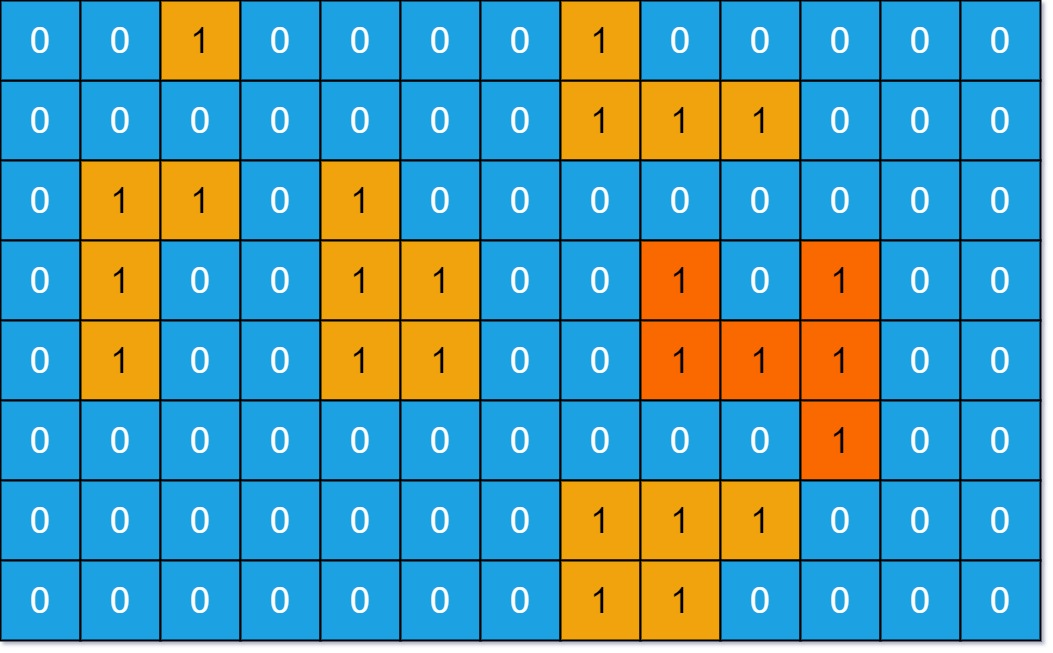In this part, I try to solve the problem of 659 with C#, and this level is medium.
Problem
You are given an m x n binary matrix grid. An island is a group of 1's (representing land) connected 4-directionally (horizontal or vertical.) You may assume all four edges of the grid are surrounded by water.
The area of an island is the number of cells with a value 1 in the island.
Return the maximum area of an island in grid. If there is no island, return 0.
Example 1:

Input: grid = [[0,0,1,0,0,0,0,1,0,0,0,0,0],[0,0,0,0,0,0,0,1,1,1,0,0,0],[0,1,1,0,1,0,0,0,0,0,0,0,0],[0,1,0,0,1,1,0,0,1,0,1,0,0],[0,1,0,0,1,1,0,0,1,1,1,0,0],[0,0,0,0,0,0,0,0,0,0,1,0,0],[0,0,0,0,0,0,0,1,1,1,0,0,0],[0,0,0,0,0,0,0,1,1,0,0,0,0]] Output: 6 Explanation: The answer is not 11, because the island must be connected 4-directionally.
Example 2:
Input: grid = [[0,0,0,0,0,0,0,0]] Output: 0
Constraints:
m == grid.lengthn == grid[i].length1 <= m, n <= 50grid[i][j]is either0or1.
My Answer
I use the DFS to solve this problem.
Concept following:
- Loop grid
- Traverse all island and compare the max count of island areas
- Get the max result of island
I split the program to partial class to help us easy to read, and define an enum of area to mark the traversal.
Finally, I use the function TraverseIsland that is an algorithm of DFS to help us traverse the four directions.
1 | public partial class Solution { |
Run Result:
1 | Runtime: 98 ms, faster than 93.42% of C# online submissions for Max Area of Island. |